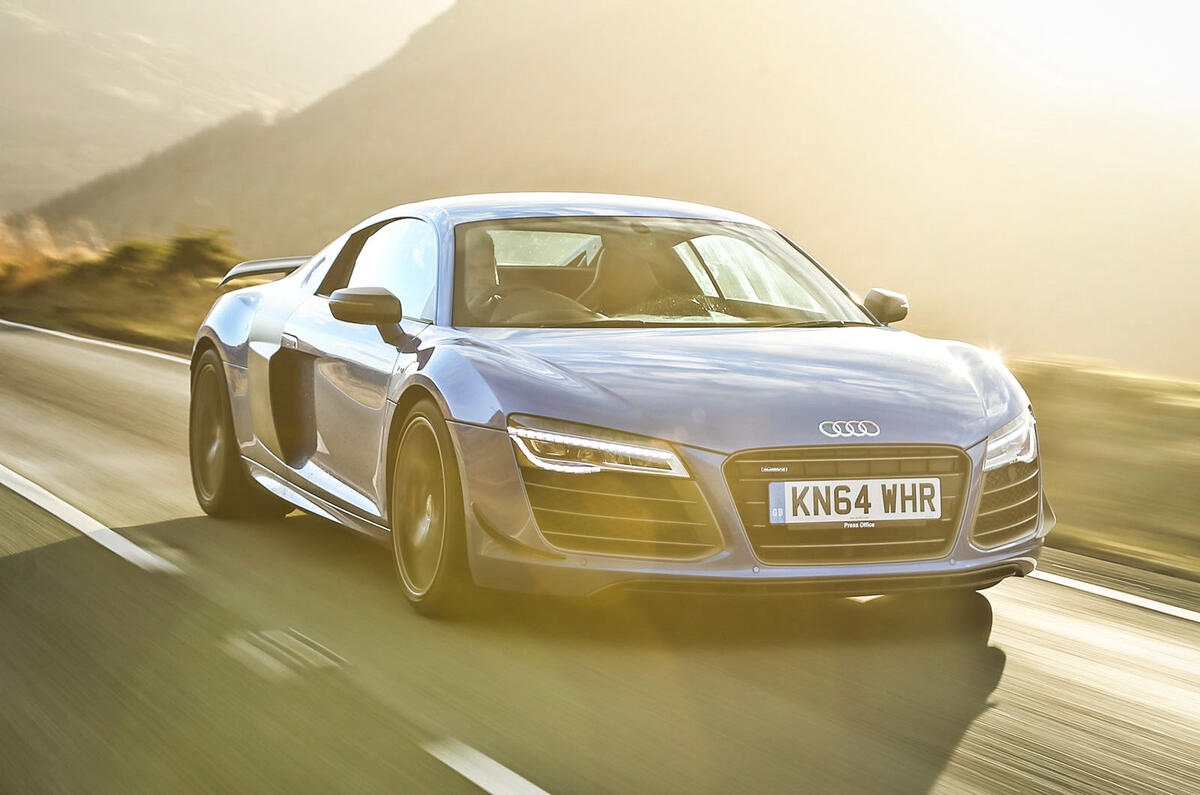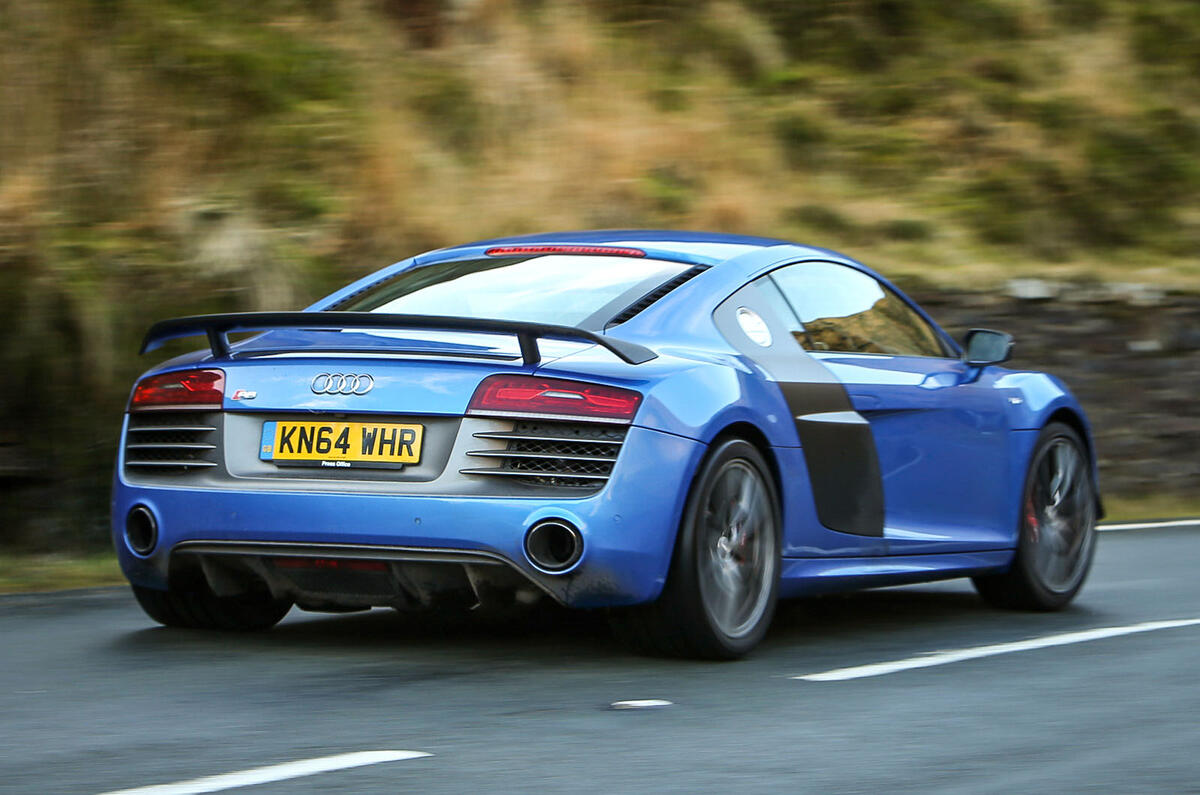The LMX is the run-out edition of the Audi R8. It costs an almost perfectly round £160,025. It has marginally more power than any R8 that precedes it. It also has, for good measure, some things called laser lights – a world first, by the maker’s measure.
Most notably, there will be just 99 examples worldwide, which means that unless your local park has ‘Hyde’ in the name, you’re unlikely ever to see one.
Ostensibly, there’s not a whole heap of reasons why you would. Ever since it began freewheeling towards a second generation of R8, Audi has been softly peddling low-volume, money-spinning ‘special’ variants of its icon.
But the truth is that, aside from the original introduction of the V10 engine and, latterly, the seven-speed S-tronic dual-clutch automatic transmission, the car’s core identity remains much as it was in 2006. (Even now, there’s only 37bhp between the LMX and a six-year-old R8 with the same V10 donkey.)
No, the only real reason for accepting that a thin veneer of specialness exists in the crystal-effect customised paint job is the fact that the car represents a lamentable full stop. Come springtime, the original R8, some of them as dog-eared and mucked about with as old Ford Sierras, will be ushered into the quiet pasture of Audi’s memory banks and the new, tricked-out and tuned-up replacement will be upon us.
The second generation, on paper at least, will be quicker, cleaner, lighter and cleverer. Quattro GmbH, a skunkworks of high ambition, will have seen to it, bankrolled by its parent’s profit margin and a steely determination to make the second self-penned album at least as intoxicating as the first.
Given the width and breadth of its earlier achievement, our faith in the band at this point ought to be unassailable. The R8’s roundedness is now so well enshrined that today it’s hard to imagine the kind of car that could conceivably have emerged from Audi’s original, Gallardo-lite take on a Porsche 911 beater – a mindlessly fast, overblown TT, perhaps? Instead, with its first go at a mid-engined production car, they gave us the first truly brilliant sports car born this century.
Following on from the biggest-selling Lamborghini yet ought to have been fraught with peril, but the R8 was and is the overtly better-resolved version of the mid-engined, all-wheel-drive, FSI-powered concept Audi had righteously conceived in its own image half a decade before.
All the Italian edges smoothed away by Walter de Silva on the outside were matched by Audi’s diligence on the underside, plundering Porsche’s playbook for the usability fairy dust that made the R8 a one-car answer to all the right questions.


















































































Join the debate
Add your comment
Completely agree with Autocar
Saying goodbye to Autocar.....
In my opinion this is the
Doesn't exist........?
Perfection as a whole doesn't exist, it can't,perfect for someone?,well, yes,getting back to the Car,what's going to replace it?,an evolution model?,a hybrid perhaps?.